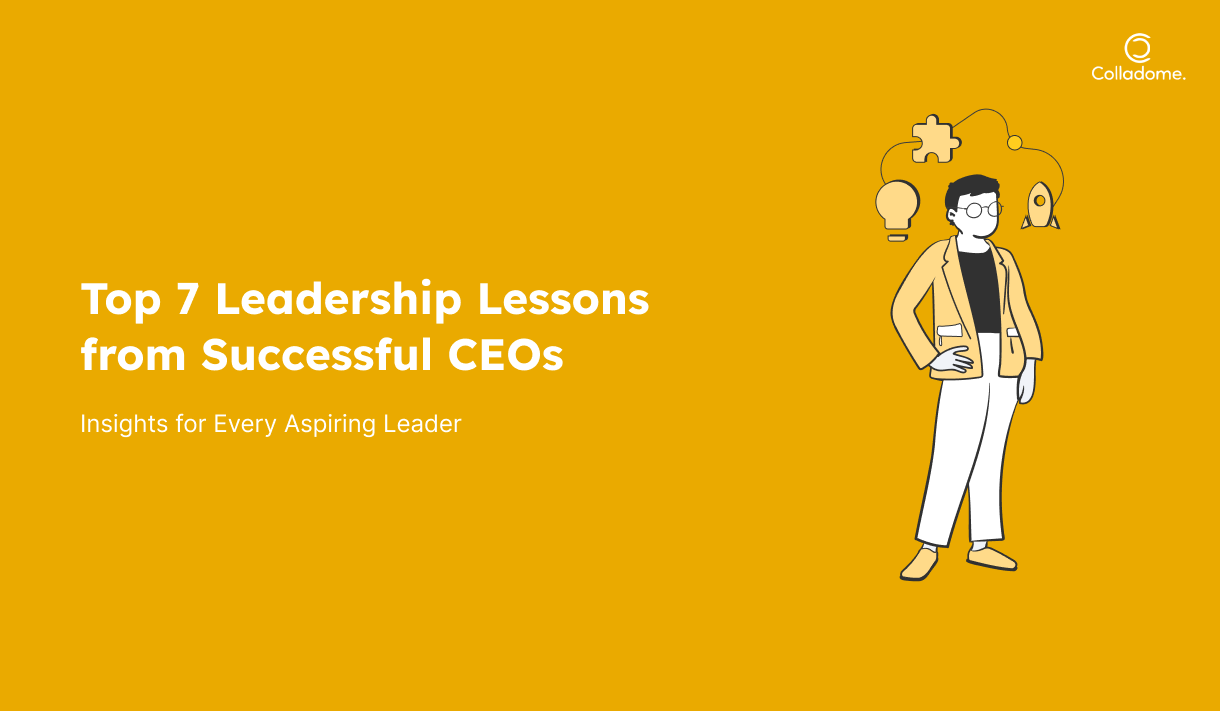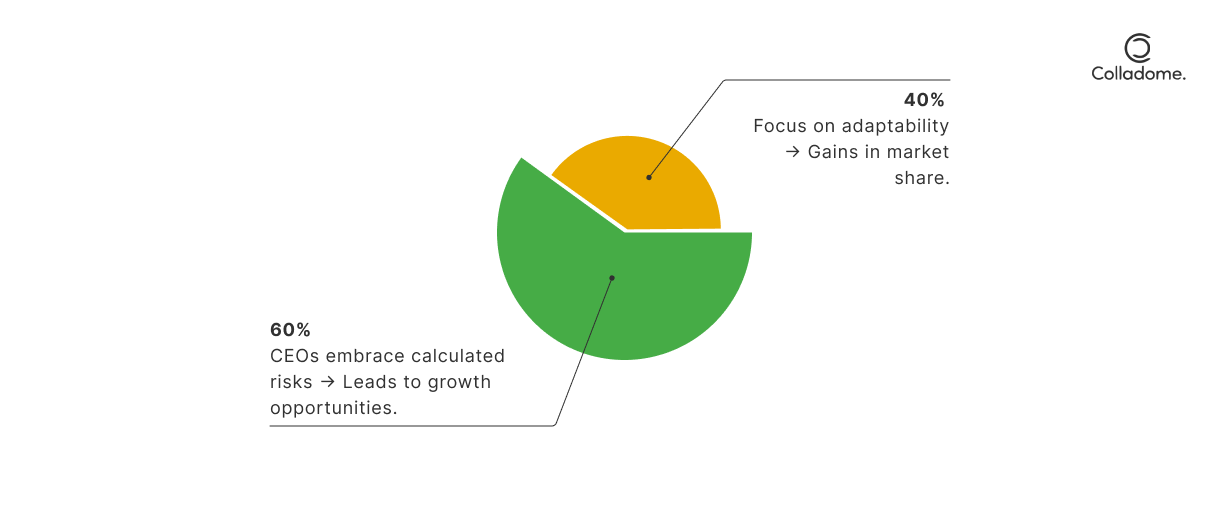Introduction
What makes the most successful CEOs tick? Beyond their titles and achievements lies a treasure trove of leadership lessons that can transform how we approach challenges, inspire teams, and drive innovation. From tech moguls to industry giants, their journeys offer a masterclass in leadership and innovation. Whether you’re crafting a leadership lesson plan, looking for 10-minute leadership lessons, or diving deep into 7 lessons in leadership and innovation, this blog has something for you.
Let’s explore the top 7 leadership lessons from successful CEOs, unpack their real-world impact, and chart a roadmap for aspiring leaders to follow.
Why Leadership Lessons Matter
Leadership isn’t just about calling the shots or sitting at the top of the org chart. It’s about sparking change, encouraging collaboration, and guiding teams through challenges with confidence and creativity. And who better to learn from than CEOs? These leaders have been in the thick of it—facing unpredictable markets, technological disruptions, and global hurdles.
Why CEOs?
First, they’ve got real-world experience. CEOs don’t just theorize about leadership; they live it every day. They’ve navigated the highs and lows of industries, made tough decisions, and learned valuable lessons along the way.
Second, they offer proven strategies. From driving innovation to managing crises, the playbook of successful CEOs is full of tried-and-true approaches that actually work. These lessons aren’t just stories—they’re strategies you can apply in your own career.
Finally, their insights are scalable. Whether you’re leading a small project team or aiming to climb the corporate ladder, these leadership lessons apply across all levels. They’re like the ultimate toolkit for anyone looking to make an impact.
And here’s a stat to back it up: Companies with strong leaders see 19% higher profitability compared to their competitors, according to a McKinsey study. That’s not just coincidence—it’s the tangible impact of effective leadership.
So, if you’re looking to up your leadership game, take a page from the CEO playbook. Their journey, struggles, and wins aren’t just inspiring; they’re a roadmap for success. Leadership isn’t just a skill—it’s the secret sauce to thriving in any environment. Why not start learning from the best?
What Makes a CEO’s Leadership Unique?
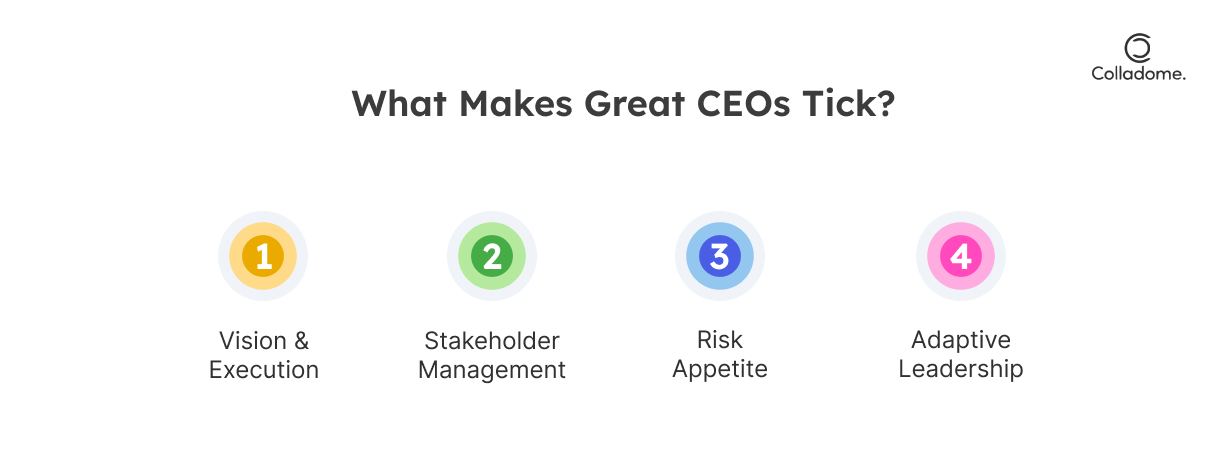
CEO leadership is a league of its own, blending bold vision with the ability to adapt swiftly. Here’s why their approach stands out and serves as a blueprint for aspiring leaders:
1. Vision and Execution: CEOs master the art of thinking big while staying grounded. They create strategies that transform ambitious goals into actionable outcomes. According to McKinsey, successful CEOs who exhibit bold decision-making are far more likely to thrive in challenging environments Jennings Executive Search McKinsey & Company
2. Stakeholder Management: Whether it’s engaging employees, appeasing investors, or understanding customer needs, CEOs juggle diverse perspectives to align them with the organization’s vision. This ability to foster collaboration across boundaries is a cornerstone of their leadership success.
3. Risk Appetite: Thriving amid uncertainty is a key trait. Exceptional CEOs not only mitigate risks but often convert them into growth opportunities. Research indicates that over 60% of high-performing CEOs embrace calculated risks, which fuels innovation and long-term success McKinsey & Company.
4. Adaptive Leadership: In a world where economic and technological disruptions are constant, CEOs who are agile and willing to pivot are better positioned to lead effectively. For instance, leaders in 2023 faced unprecedented challenges, yet those who adapted quickly saw higher market share gainsJennings Executive Search McKinsey & Company
Latest Facts and Figures
- Impact on Profitability: Companies led by strong CEOs outperform competitors by up to 19% in profitability, according to McKinsey Jennings Executive Search
. - Longevity in Leadership: Studies show that nearly 50% of CEOs fail within 18 months, underscoring the importance of resilience and strategic clarity in leadership McKinsey & Company
. - Trend for 2024: As businesses move into 2024, CEOs are increasingly focusing on integrating digital transformation with sustainability, signaling a shift toward holistic leadership priorities Jennings Executive Search.
By observing these traits and strategies, aspiring leaders can craft their own pathways to success. Learning from CEOs is not about imitation but about adopting the mindset that fuels their accomplishments.
The Top 7 Leadership Lessons from Successful CEOs
Being a CEO isn’t just about holding a title—it’s about making decisions that shape industries and inspire people. Let’s unpack seven transformative lessons from some of the world’s most successful CEOs, complete with real-world examples, facts, and figures to inspire your leadership journey.
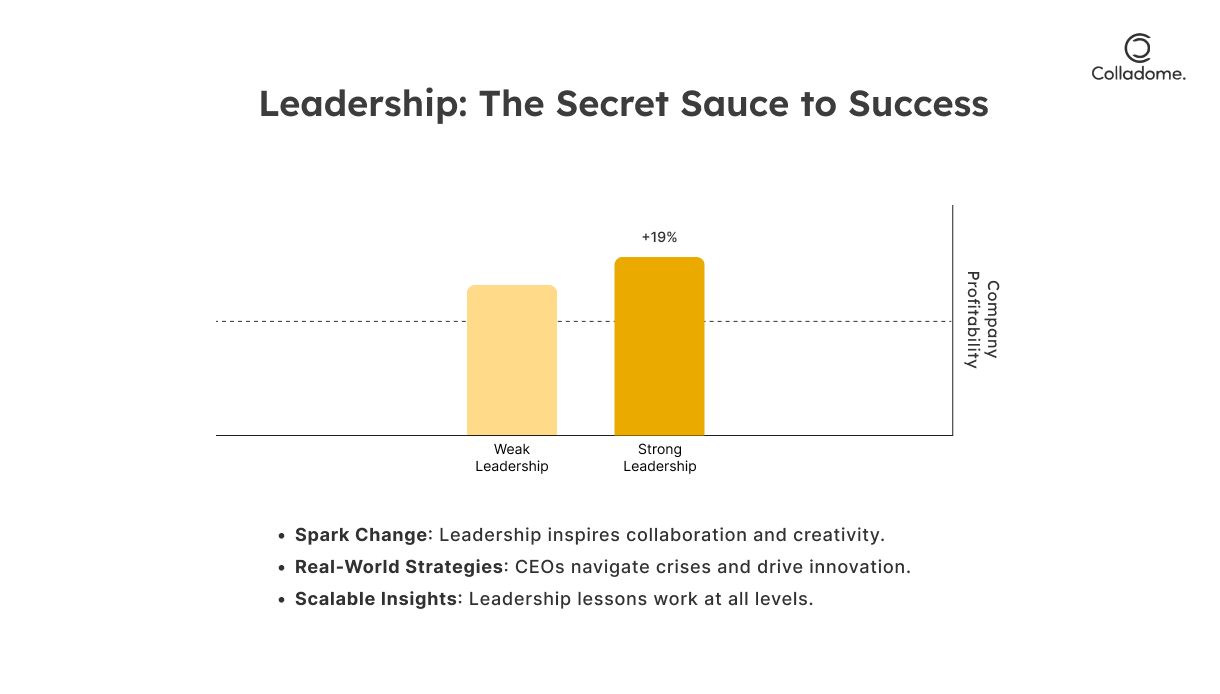
1. Embrace Failure as a Stepping Stone

Jeff Bezos, the visionary behind Amazon, believes failure is essential to innovation. As he puts it, “Failure and invention are inseparable twins.” Amazon’s trajectory wasn’t just about success—it included bold risks and lessons from failures like the Fire Phone.
Real-World Example
The Fire Phone’s failure cost Amazon millions, but the lessons learned helped shape the development of Alexa and Echo, now leading products in the smart home market. Amazon’s AWS, another innovation, contributed to its market dominance, generating $85 billion in revenue in 2023 Jennings Executive Search McKinsey & Company.
Takeaway
Treat failures as feedback loops. Every setback is a springboard for your next breakthrough.
2. Prioritize Customer-Centricity
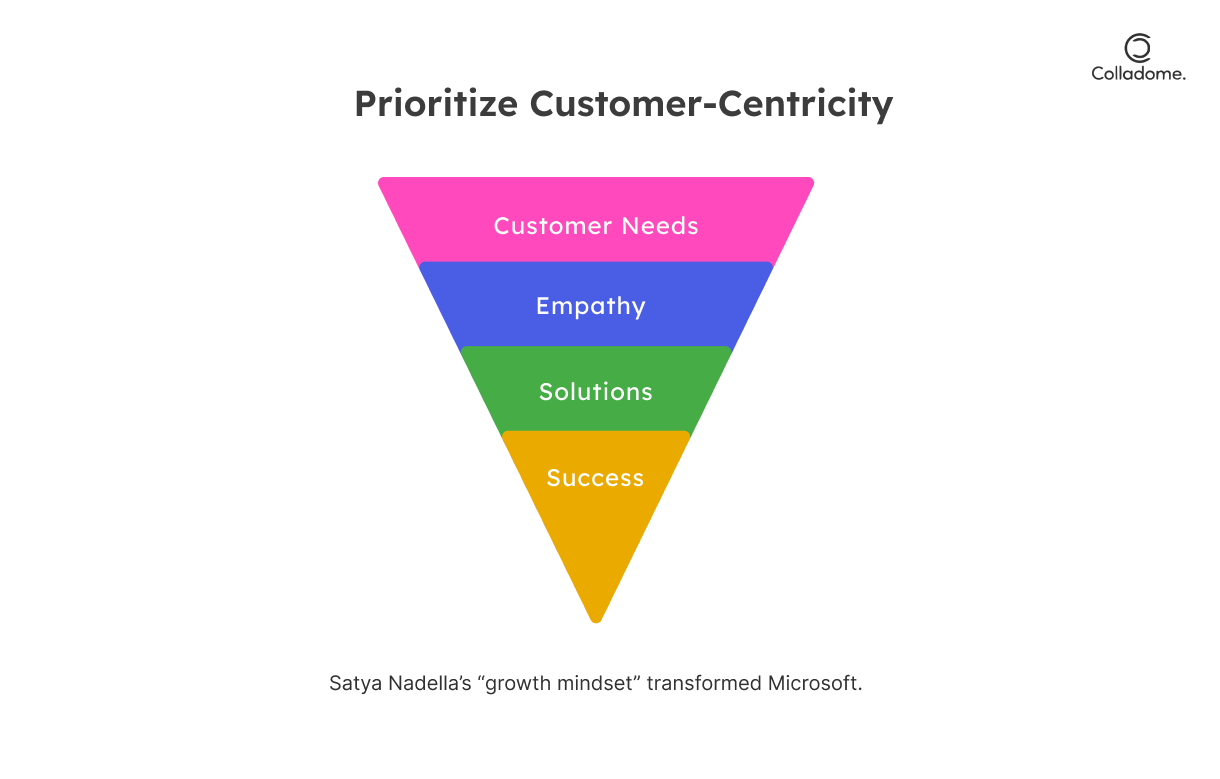
When Satya Nadella stepped in as CEO of Microsoft in 2014, he pivoted the company towards customer empathy. His “growth mindset” approach revamped Microsoft’s internal culture and global reputation.
Real-World Example
Nadella’s push for cloud computing (Azure) and AI paid off big time, helping Microsoft hit a $2.5 trillion market cap in 2023 McKinsey & Company. This customer-first philosophy turned Microsoft into a solution-driven tech powerhouse.
Takeaway
Listening to your customers and understanding their needs isn’t just nice—it’s a strategy for success.
3. Lead by Example
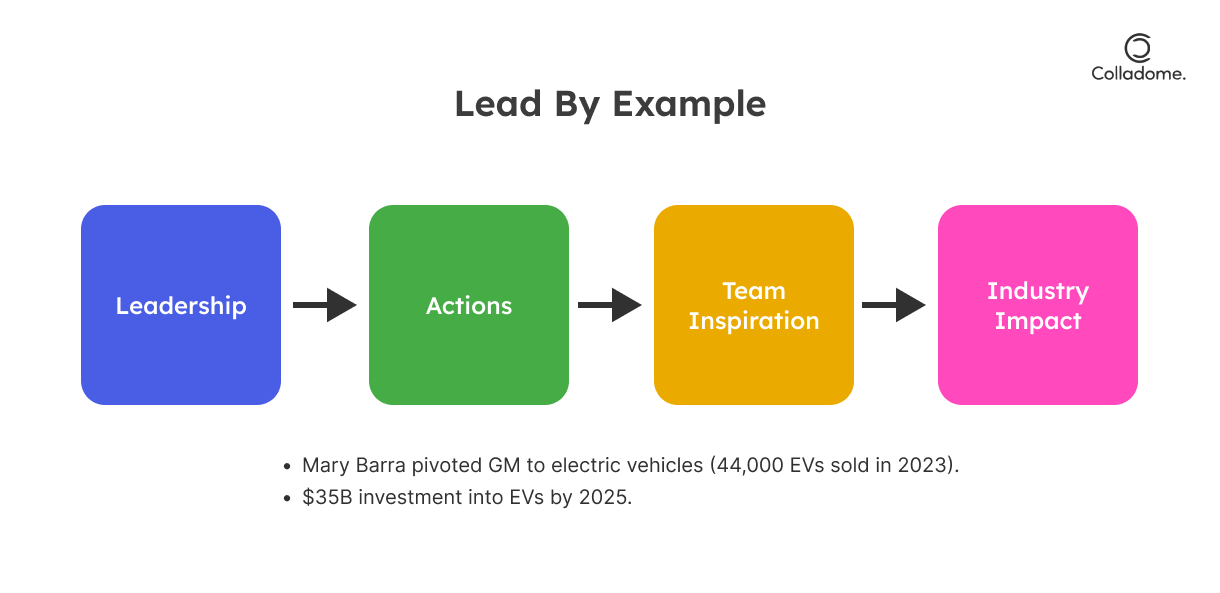
Mary Barra, General Motors’ first female CEO, believes in leading from the front. Her decision to pivot GM towards electric vehicles and self-driving technology showcases her commitment to sustainability and innovation.
Real-World Example
Under Barra’s leadership, GM committed $35 billion to EVs by 2025, aiming to transition to an all-electric fleet by 2035. In 2023, GM sold over 44,000 electric vehicles, positioning itself as a global EV leader Jennings Executive Search.
Takeaway
Your actions speak louder than words. When leaders walk the talk, teams are naturally inspired to follow suit.
4. Foster Innovation
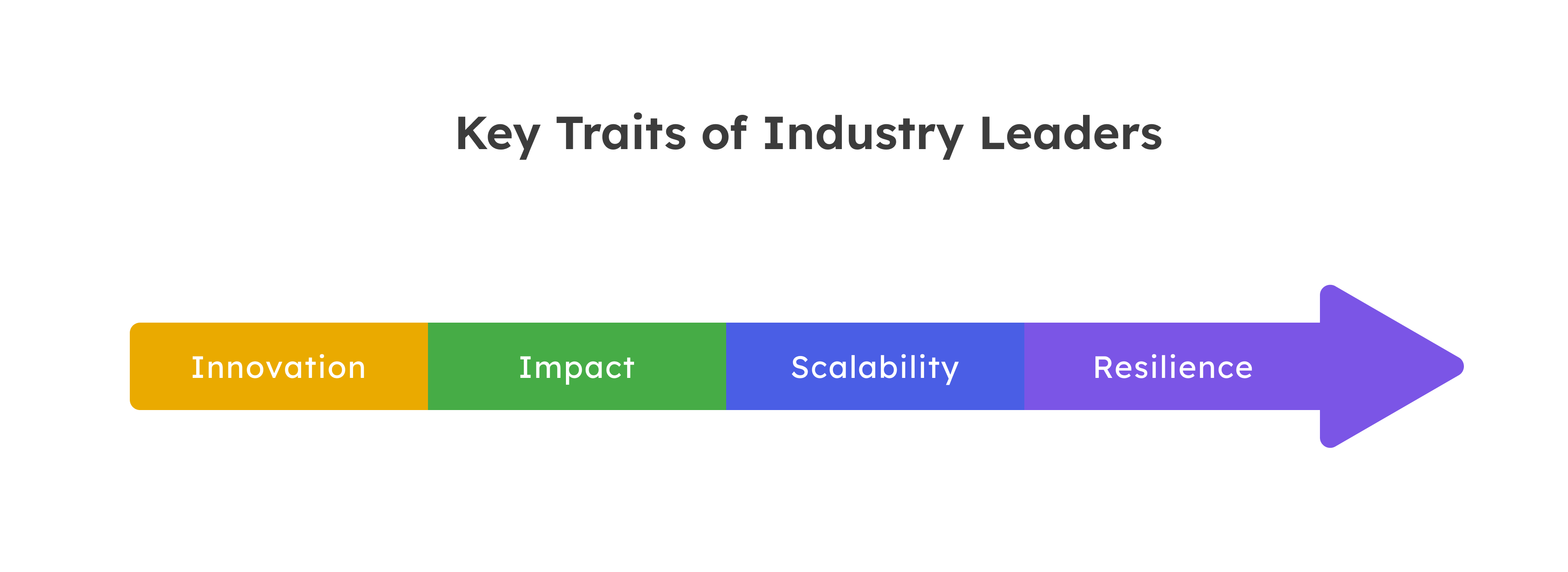
Elon Musk’s name is synonymous with pushing boundaries. Whether it’s Tesla’s EV dominance or SpaceX’s reusable rockets, Musk’s relentless focus on innovation sets him apart.
Real-World Example
SpaceX reduced the cost of launching satellites by nearly 40% with reusable rockets, fundamentally changing the economics of space exploration. Tesla, meanwhile, leads the EV market with $24.93 billion in quarterly revenue as of 2023 McKinsey & Company.
Takeaway
Encourage creativity and experimentation in your organization. Even wild ideas can lead to transformative breakthroughs.
5. Build a Strong Company Culture
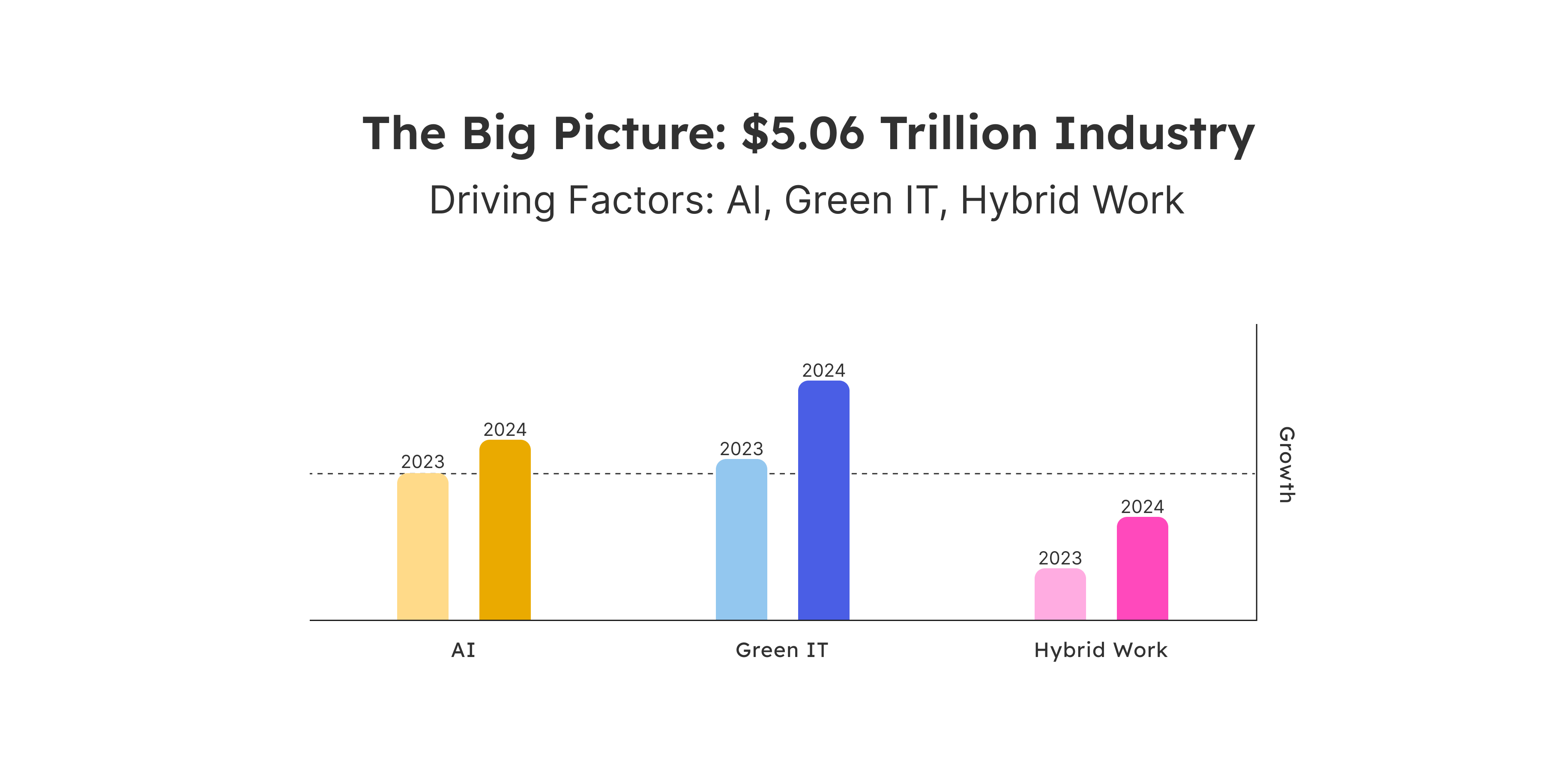
Howard Schultz, Starbucks’ former CEO, demonstrated the power of a people-first culture. By prioritizing employee well-being, Schultz turned Starbucks into more than just a coffee shop—it became a community.
Real-World Example
Starbucks offers benefits like health care and tuition reimbursement for employees, which significantly reduced turnover. The company’s focus on inclusivity and sustainability has kept it profitable, with $9.1 billion in revenue in Q3 2023 Jennings Executive Search McKinsey & Company.
Takeaway
Investing in your team isn’t just ethical—it’s profitable. A motivated workforce drives better results.
6. Adapt Quickly to Change

Indra Nooyi transformed PepsiCo during her tenure by staying ahead of consumer trends. Her “Performance with Purpose” strategy aligned business goals with sustainability and health trends.
Real-World Example
Nooyi’s focus on healthier snack options boosted revenue by 80% during her 12-year tenure. By 2023, PepsiCo’s revenue exceeded $90 billion, with its sustainable products driving growth McKinsey & Company.
Takeaway
The ability to pivot and align with market shifts is crucial for long-term success. Agility keeps you competitive.
7. Communicate with Clarity and Vision
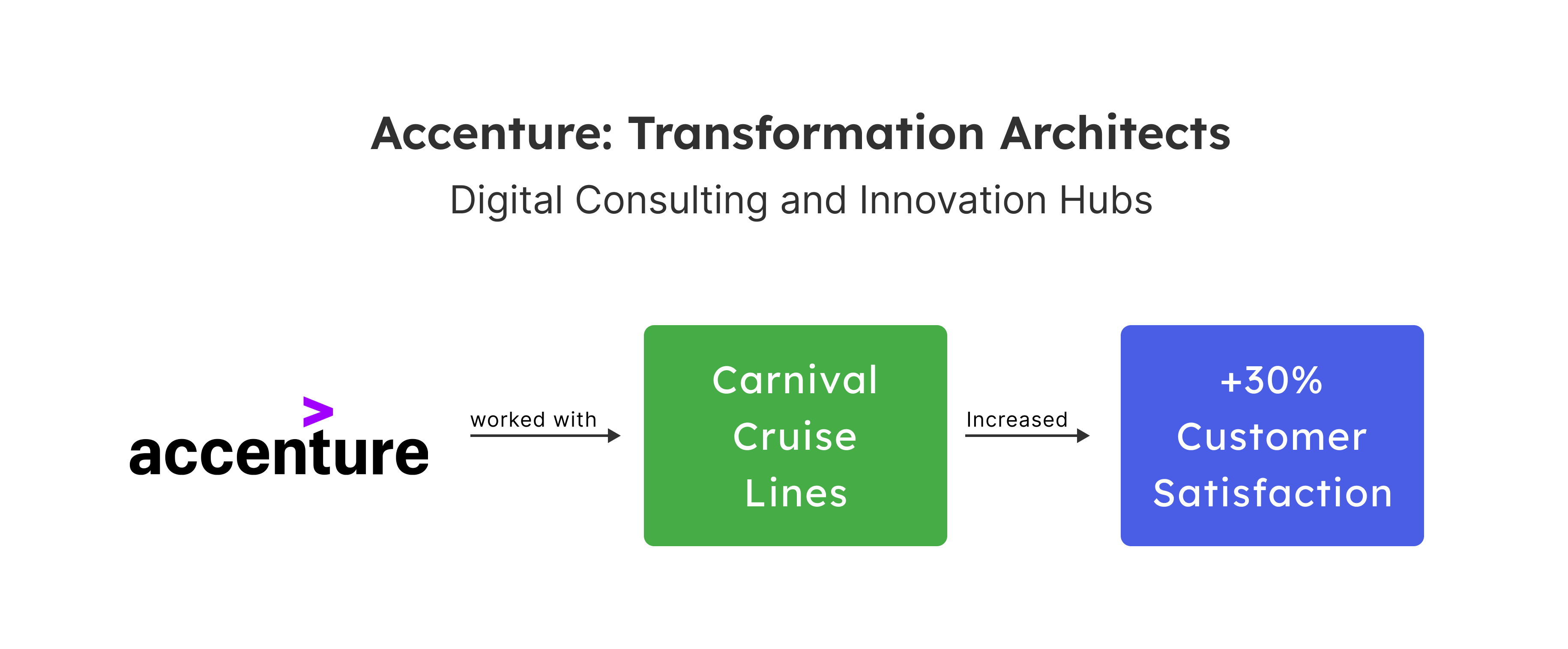
Tim Cook has successfully steered Apple after Steve Jobs, focusing on clear communication and long-term vision. His emphasis on privacy, sustainability, and innovation has strengthened Apple’s position globally.
Real-World Example
Cook’s focus on privacy earned Apple user trust, contributing to record revenues of $394 billion in 2023. Apple’s sustainability initiatives, like using 100% recycled materials, further reinforce its vision Jennings Executive Search McKinsey & Company
Takeaway
Clarity and consistency in communication are vital for building trust and inspiring loyalty.
From Bezos’ acceptance of failure to Cook’s visionary communication, these leadership lessons prove one thing: great leaders aren’t born; they’re shaped by their experiences and mindset. Whether you’re leading a team of five or dreaming big for your career, these insights are your roadmap.
Remember, leadership isn’t about a title—it’s about making an impact. Which of these lessons resonates with you the most?
How to Implement These Lessons
Leadership lessons from CEOs aren’t just inspiring stories; they’re actionable strategies. Here’s how to apply them in your professional life:
| Lesson | Action Plan |
| Embrace Failure | Reflect on setbacks and extract actionable insights. |
| Customer-Centricity | Conduct surveys and use customer feedback to refine your offerings. |
| Lead by Example | Demonstrate the values and behaviors you expect from your team. |
| Foster Innovation | Allocate resources for experimentation and empower teams to think creatively. |
| Build Strong Culture | Organize team-building activities and recognize contributions. |
| Adapt Quickly | Monitor trends and train teams to embrace change. |
| Communicate Clearly | Use storytelling to align your team with your vision. |
Real-World Leadership in Action: Jeff, Satya, and Mary
1. Jeff Bezos and Amazon: Experimentation FTW
Let’s talk about Amazon and its Day 1 mentality. Jeff Bezos made it clear that innovation wasn’t a one-time thing; it’s an everyday thing. This mindset pushed Amazon from being just an online bookstore to, well, taking over the world. Remember when two-day delivery felt like a luxury? Bezos’ focus on long-term thinking and experimenting (hello, Alexa!) made it possible. His mantra? “Fail fast, learn faster.”
2. Satya Nadella and Microsoft: The Power of Empathy
When Satya Nadella took the reins at Microsoft, he didn’t just steer the ship; he reshaped the entire course. His secret sauce? Empathy. Yep, you heard that right. Satya believed that understanding people—whether employees or customers—was key to success. And boy, did it work. Microsoft became a cloud computing and AI powerhouse under his leadership. If you’re curious, his book Hit Refresh dives into how he did it. Spoiler: empathy and a growth mindset are game-changers.
3. Mary Barra and GM: Sustainability on Wheels
Mary Barra’s leadership is steering General Motors into a greener future. Her bold move to shift the focus to electric vehicles is making waves in the auto industry. But it’s not just about the cars—her transparency and accountability have earned GM a reputation for doing business the right way. Barra’s vision? A zero-emission future. Talk about driving change, literally and figuratively!
Leadership isn’t one-size-fits-all, but these three show how innovation, empathy, and sustainability can transform industries.
Future Predictions
| Trend | Future Prediction |
| Digital Transformation | CEOs will need to prioritize AI and automation to remain competitive. |
| Sustainability Leadership | Companies will increasingly seek leaders with a focus on ESG (Environmental, Social, and Governance). |
| Hybrid Work Culture | Leadership strategies will evolve to address remote and hybrid team dynamics. |
The Heart of Great Leadership
Here’s the thing: being a great leader isn’t about fancy titles or corner offices—it’s about action, empathy, and the drive to keep getting better. Leadership isn’t a one-size-fits-all deal, but some principles truly stand the test of time.
Take Jeff Bezos, for example. His resilience and obsession with innovation turned Amazon into an empire. Then there’s Satya Nadella, who showed us the magic of putting people first. His focus on empathy and a customer-first mindset transformed Microsoft into a global tech powerhouse. And let’s not forget Mary Barra—her bold vision for a zero-emission future is literally driving General Motors into a more sustainable tomorrow.
What’s inspiring about these leaders? They didn’t just sit back and let things happen; they made things happen. And their success stories aren’t just about them—they’re roadmaps we can follow too. Whether it’s embracing change like Bezos, leading with empathy like Nadella, or sticking to your values like Barra, there’s something here for everyone to learn.
So, where do you start? Pick one lesson, even a small one, and lead with intention. Maybe it’s listening more, thinking long-term, or taking that first bold step toward change. The truth is, great leaders aren’t born—they’re made.
The world of leadership is constantly evolving, but the wisdom of trailblazers like these? That’s your compass. Now, the big question: which lesson will you run with to level up your leadership game?


